It's on pin 14, which is the master clock input (MCLK) of a WM8761: Low cost stereo DAC. I'm guessing it's meant to act as a small inductor? But why would you want that on a clock input?

It's on pin 14, which is the master clock input (MCLK) of a WM8761: Low cost stereo DAC. I'm guessing it's meant to act as a small inductor? But why would you want that on a clock input?
It's a serpentine track. They are often used where equal track lengths are required with high-speed designs. In this case it is probably used to implement a very short delay.